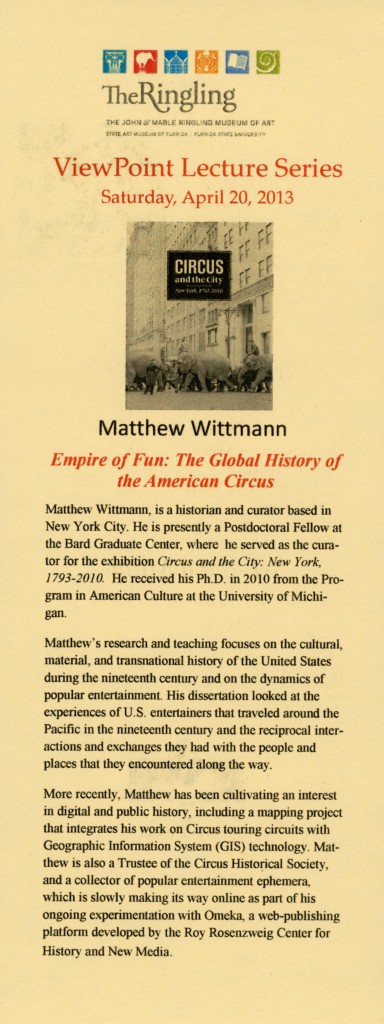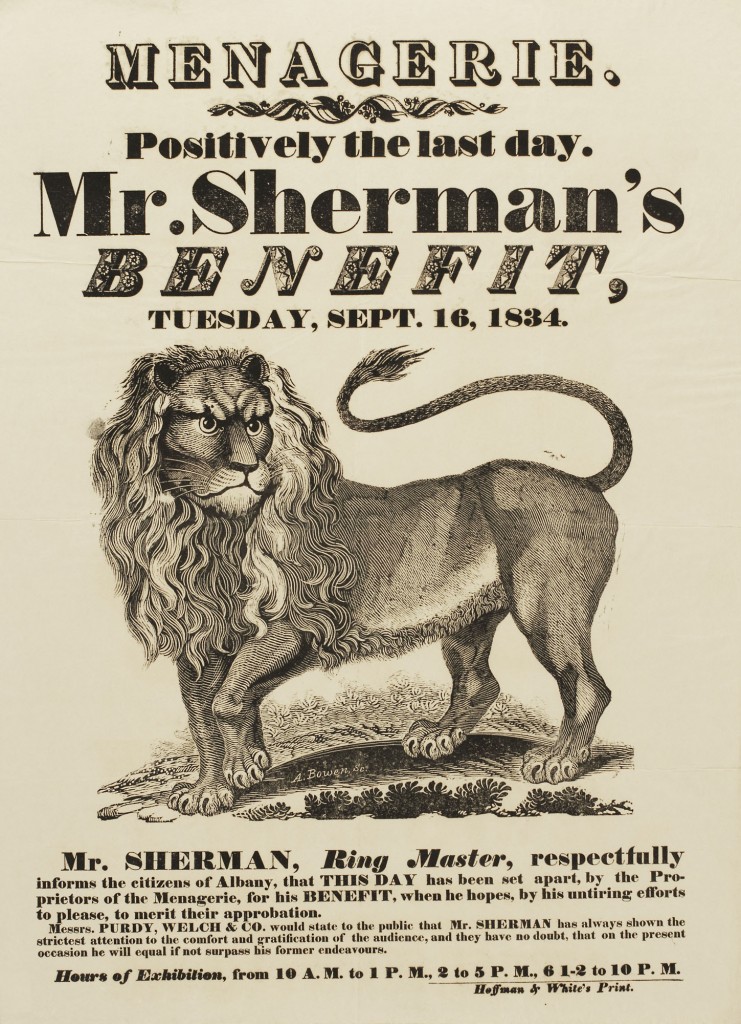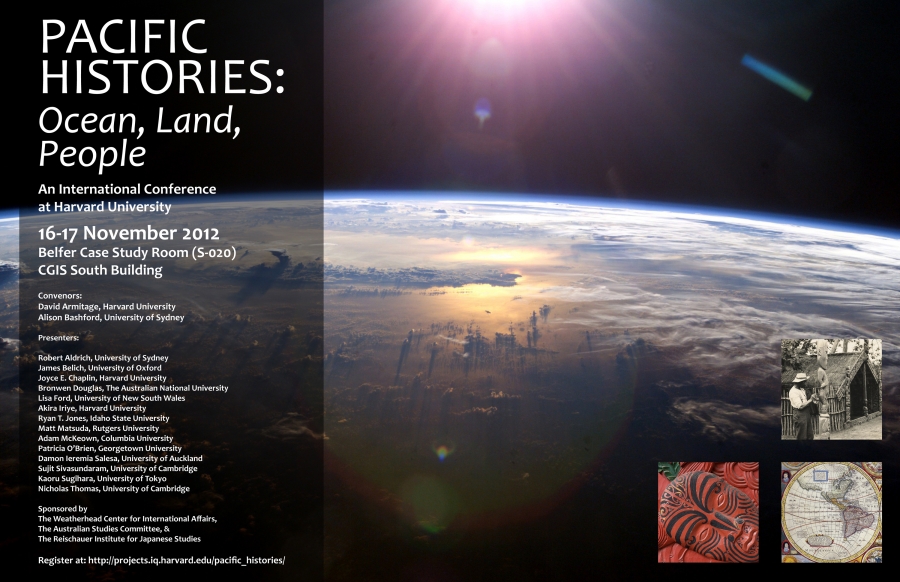 Details here.
Details here.
Category: talks
Making the Circus American in Albany

Last week I went up to Albany to deliver a lecture on the circus for the “Making It American” series at the Albany Institute of History & Art. My talk explored how various geographic, economic, and demographic factors in the United States transformed this rather quiescent European cultural import into a dynamic commercial industry. My take-home points centered on the way that mobility, diversity, and gigantism defined the American circus. But I don’t want to get into all that here. Rather, I want to write a quick post about the handbill above, which was brought to my attention when the Albany Institute used it to advertise the talk. It is very interesting example of evolution of traveling shows in the United States amidst the ongoing Market Revolution. Although it is headlined as a “Menagerie,” the fact that the advertised benefit is for Mr. Sherman, a “Ring Master,” suggests that the show was something more than just a traveling zoo. Until the 1830s, the circus was a primarily equestrian entertainment with acrobats, clowns, and the like, but it gradually absorbed the related business of itinerant animal exhibitions. This 1834 handbill is for the “Grand Mammoth Zoological Exhibition” run by Eisenhart Purdy and Rufus Welch, and it was one of the last and largest traveling menageries prior to their absorption by the circus industry. The show traveld on twenty wagons from town to town and advertised seventy-five animals that were displayed in three separate tents. The one elephant was Caroline, the so-called “ship-wrecked elephant,” who was known by that moniker after surviving an accident on the Delaware River in late 1831. Caroline performed an act in the ring with her keeper, the Mr. Sherman above, and the other ring attraction involved two pony-riding monkeys, Jim Crow and Dandy Jack. Purdy and Welch also engaged the Washington Military Band for the season, which included some dozen musicians, and seems to have been the first professional brass band to tour with a show. This evolving mix of circus (ring acts), menagerie (exotic animals), and ancillary attractions (brass band) would cohere into what we would now regard as the classic American circus in the decade that followed.
The handbill itself is an interesting artifact. It was printed by Hoffman and White in Albany, but the fine lion engraving was originally made by Abel Bowen, a noted Boston printer. His signature can be seen between the animal’s legs and the “sc.” abbreviation after simply indicates it was “scuplted,” i.e. carved or engraved by Bowen. It was in a likelihood a stereotyped block that either the Albany printers had in their inventory or that the show itself lent to local printers to produce their publicity. There’s a nice mix of contemporary fancy types on the bill, and the “Benefit” line letters in particular have some exquisite detail. The benefit advertised here was a standard event where the profits for a particular performance were set aside for a specific performer or charity. It provided good publicity for the show and also gave the proprietors a chance to reward popular acts. As the ringmaster, Sherman was the public face of the show, but despite his “untiring efforts to please,” he does not seem to have had a long career in show business. After the “Grand Mammoth Zoological Exhibition” left Albany, it continued touring through Connecticut and New Jersey before wintering in Philadelphia. The handbill is a fine example of contemporary ephemera that also gives us a glimpse into the gradual merging of the circus and menagerie business in the United States.
For more, see Stuart Thayer’s Annals of American Circus. I’ve also written more about the evolution of circuses, menageries, and printing in this era here and here.
Histories with a Future
I’m headed to the Pacific History Association’s conference in Wellington. The program looks great and I’ll be giving a paper that is a comparative look at the colonial/frontier historiography of NZ and the USA as viewed through an 1890 tour of the Pacific by Arizona Charlie’s Wild West Show.



